Madagascar, an island brimming with unparalleled biodiversity and dramatic landscapes, offers some of the most exciting and varied hiking experiences in the world. Whether you’re scaling jagged limestone formations, trekking through lush rainforests, or exploring vast canyons, hiking in Madagascar has something to captivate every adventurer. If you’re planning on traveling to Madagascar and are eager to hit the trails, here are the best places to go hiking on this incredible island.
Tsingy de Bemaraha National Park: A Geological Marvel
Tsingy de Bemaraha National Park is arguably one of the most unique hiking destinations on the planet. Located in the western part of Madagascar, this UNESCO World Heritage site is famous for its “tsingy“, a Malagasy word meaning “where one cannot walk barefoot.” The park is characterized by its sharp, needle-like limestone formations, which create a labyrinthine landscape that is both challenging and awe-inspiring.
Hiking in the tsingy national park offers a truly unique experience. The most popular trails involve navigating narrow canyons, crossing suspension bridges, and climbing steep rock faces with the help of fixed cables and ladders. The reward for your efforts is a breathtaking view of the tsingy formations stretching as far as the eye can see. Along the way, you’ll encounter a variety of wildlife, including lemurs, birds, and reptiles, all of which have adapted to this harsh environment.
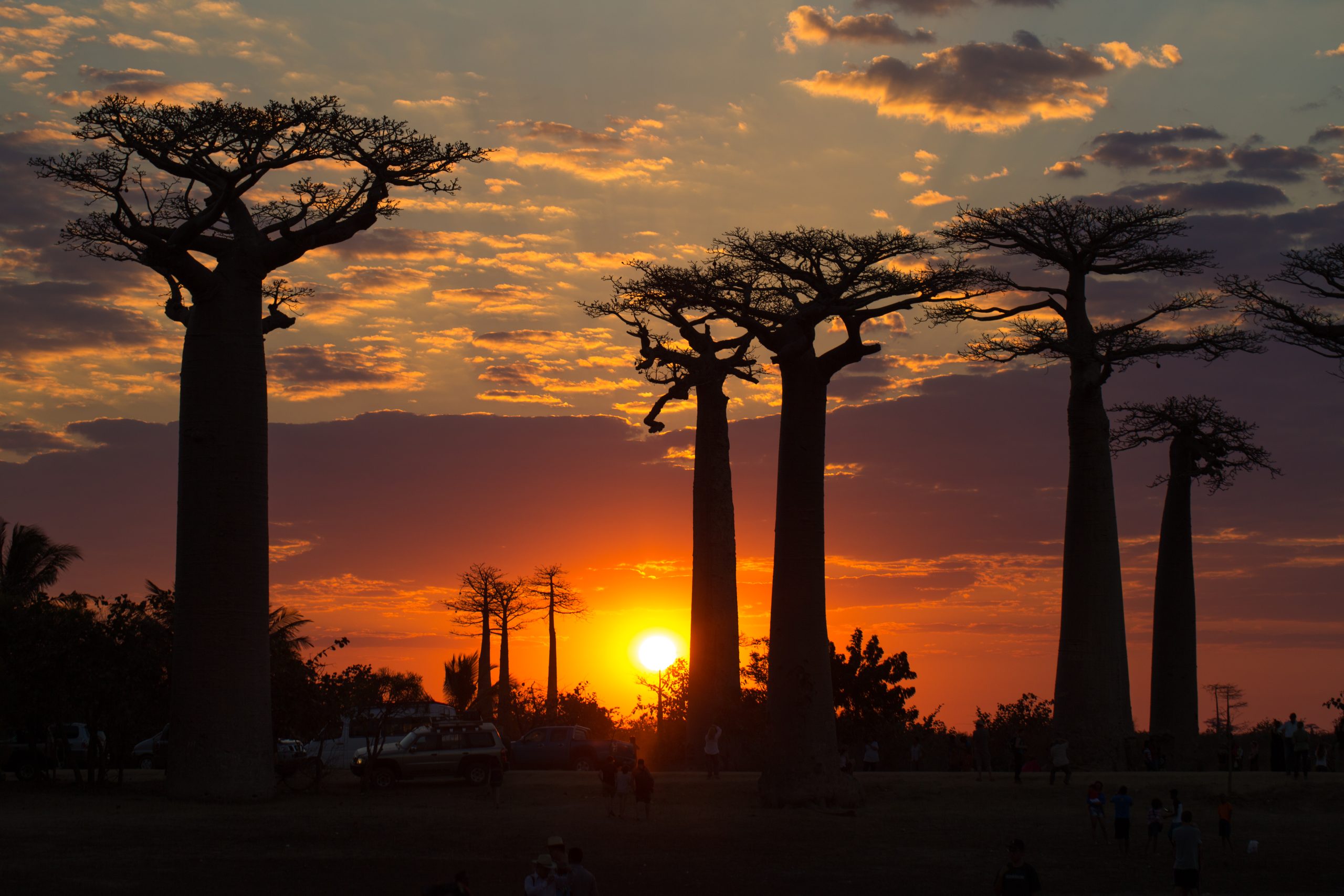
Discover the Legends of Madagascar…
For those interested in a multi-day adventure, the Manambolo Gorge, located near the park, offers additional hiking opportunities. The gorge is known for its striking cliffs, ancient burial sites, and the Manambolo River, which can be explored by canoe.
Andringitra National Park: The best hiking in Madagascar?
Located in the central highlands, Andringitra National Park is one of the highlights of hiking in Madagascar. The park is home to the island’s second-highest peak, Pic Boby (also known as Pic Imarivolanitra), which stands at 2,658 meters (8,720 feet) above sea level. The hike to the summit of Pic Boby is challenging but accessible without specialized equipment, making it a popular choice for those looking to conquer one of Madagascar’s highest points. A popular choice is to camp overnight in the park, setting off hiking in the early hours of the morning to catch the sunrise from the summit.
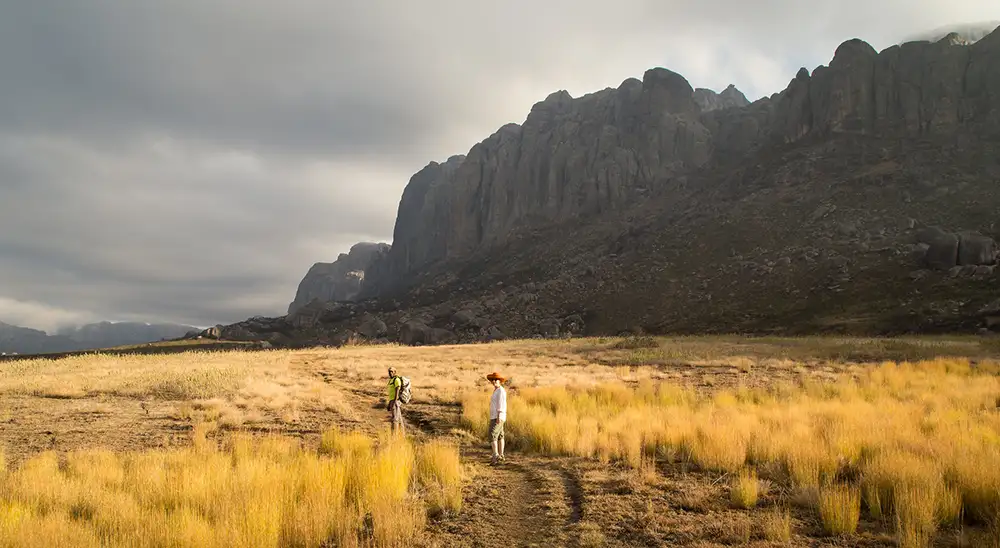
The diversity of Andringitra’s landscapes is what makes it such a fantastic destination for hiking. From granite outcrops and rolling grasslands to dense forests and waterfalls, the park offers a wide range of scenery. The “Diavolana Circuit” (Moon Circuit) is a particularly popular trail, taking hikers through some of the most dramatic landscapes, including the stunning Tsaranoro Valley, often compared to Yosemite Valley in the United States.
As you trek through Andringitra, you’ll also have the chance to spot various species of lemurs, birds, and unique plants, making the journey as much about wildlife as it is about the scenery.
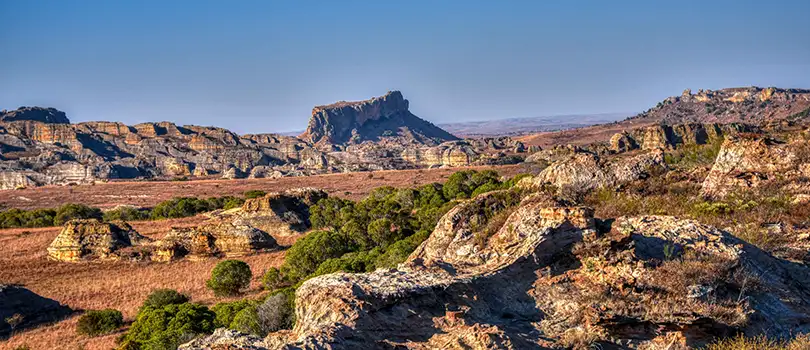
Discover Madagascar with Dadamanga
Isalo National Park: A Trek Through Time
Isalo National Park (banner image), located in south-western Madagascar, is another top destination for hiking enthusiasts. The park is known for its dramatic sandstone formations, deep canyons, natural swimming pools, and wide-open savannas. Often referred to as the “Grand Canyon of Madagascar,” Isalo offers a variety of trails that cater to different skill levels.
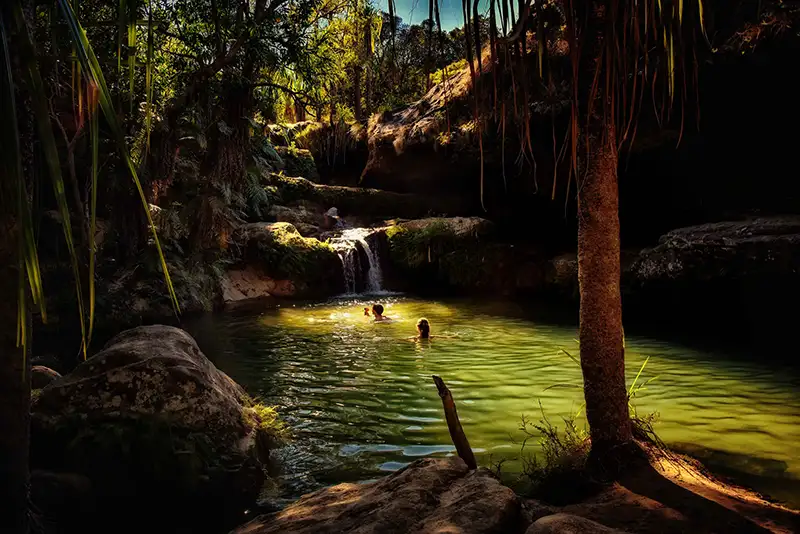
One of the most popular hikes in Isalo is the “Canyon des Singes” (Canyon of Monkeys) trail, which takes you through a stunning gorge with towering cliffs on either side. The trail ends at a beautiful natural pool, perfect for a refreshing swim after a long hike. The “Piscine Naturelle” (Natural Pool) is another must-visit spot, where you can cool off in a crystal-clear pool surrounded by lush vegetation and rocky cliffs.
Hiking in Isalo also provides an opportunity to learn about the cultural significance of the area. The Bara people, who have lived in the region for centuries, use the park as a sacred burial site. Many of the caves and cliffs within the park hold tombs, adding a layer of history and culture to your hiking experience.
Marojejy National Park: A Rainforest Adventure
For those looking to explore Madagascar’s rainforests, Marojejy National Park in the northeastern part of the island is an excellent choice. The park is one of the most biodiverse areas in Madagascar, with a range of altitudinal zones from lowland rainforest to montane forest, all the way up to the high-altitude shrubland.
Hiking in Marojejy is a true adventure, with trails that can be steep and challenging, especially in the higher altitudes. The reward, however, is well worth the effort. The park is home to several species of lemurs, including the critically endangered silky sifaka, one of the rarest primates in the world. Birdwatchers will also be delighted by the variety of bird species that inhabit the park.
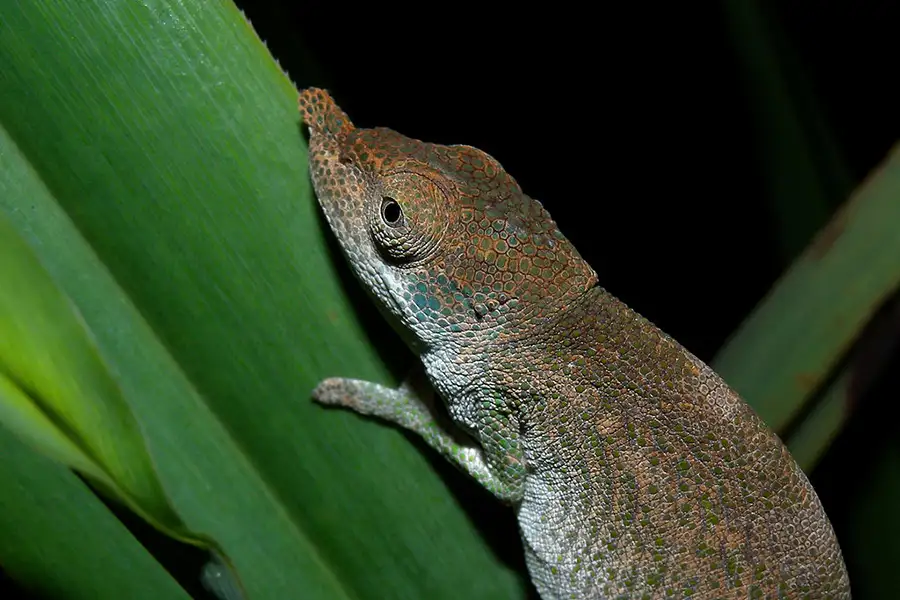
“Big-nosed Chameleon, Marojejy, Madagascar” by Frank Vassen is licensed under CC BY 2.0.
One of the most popular hikes in Marojejy is the trek to the summit of Marojejy Peak, which stands at 2,132 meters (6,995 feet). The hike takes several days and involves camping along the way, allowing you to fully immerse yourself in the park’s natural beauty. The summit offers panoramic views of the surrounding rainforest and distant coastlines, making it a highlight for many visitors.
Ankarana National Park: A Hiker’s Playground
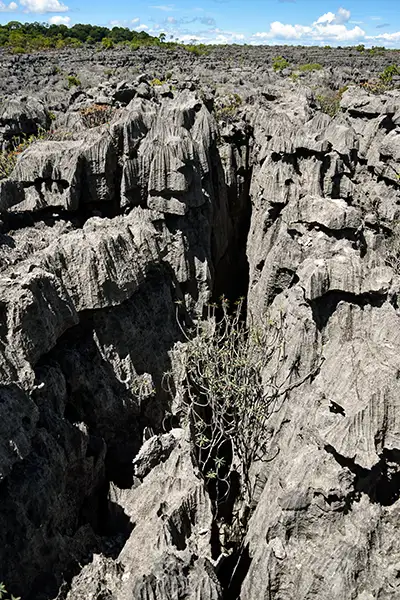
Ankarana National Park, located in northern Madagascar, is another top destination for hiking in Madagascar. The park is known for its dramatic karst limestone formations, underground rivers, and extensive cave systems. The “Little Tsingy” in Ankarana is similar to the formations found in Tsingy de Bemaraha but on a smaller scale, offering a less challenging but equally fascinating experience.
The park’s network of trails takes you through a variety of landscapes, from dry deciduous forests to rocky outcrops and deep canyons. One of the highlights is the hike to the “Grotte des Chauves-souris” (Bat Cave), where you can witness thousands of bats roosting in the cave’s ceiling. Another popular trail is the “Perte de Rivière” (Lost River), where the Ankarana River disappears into the ground, creating a stunning natural spectacle.
Ankarana is also home to a rich array of Madagascar wildlife, including lemurs, chameleons, and a variety of bird species. The park’s unique geological features and diverse ecosystems make it a must-visit destination for anyone traveling to Madagascar.
Conclusion: Madagascar – A Hiker’s Paradise
Madagascar’s diverse landscapes offer endless opportunities for hiking, from the jagged pinnacles of the tsingy national park to the rainforests of Marojejy. Each region presents its own unique challenges and rewards, making the island a paradise for outdoor enthusiasts. Whether you’re seeking dramatic rock formations, rich biodiversity, or cultural experiences, Madagascar’s hiking trails have something for everyone. When traveling to Madagascar, be sure to explore these incredible hiking destinations, where adventure and natural beauty await at every turn.


